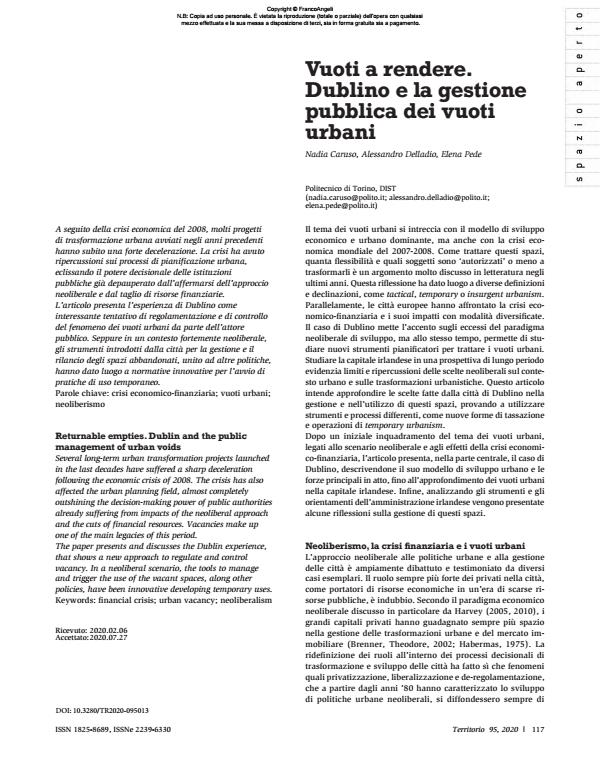Returnable empties. Dublin and the public management of urban voids
Journal title TERRITORIO
Author/s Nadia Caruso, Alessandro Delladio, Elena Pede
Publishing Year 2021 Issue 2020/95
Language Italian Pages 8 P. 117-124 File size 879 KB
DOI 10.3280/TR2020-095013
DOI is like a bar code for intellectual property: to have more infomation
click here
Below, you can see the article first page
If you want to buy this article in PDF format, you can do it, following the instructions to buy download credits

FrancoAngeli is member of Publishers International Linking Association, Inc (PILA), a not-for-profit association which run the CrossRef service enabling links to and from online scholarly content.
Several long-term urban transformation projects launched in the last decades have suffered a sharp deceleration following the economic crisis of 2008. The crisis has also affected the urban planning field, almost completely outshining the decision-making power of public authorities already suffering from impacts of the neoliberal approach and the cuts of financial resources. Vacancies make up one of the main legacies of this period. The paper presents and discusses the Dublin experience, that shows a new approach to regulate and control vacancy. In a neoliberal scenario, the tools to manage and trigger the use of the vacant spaces, along other policies, have been innovative developing temporary uses.
Keywords: Financial crisis; urban vacancy; neoliberalism
Nadia Caruso, Alessandro Delladio, Elena Pede, Vuoti a rendere. Dublino e la gestione pubblica dei vuoti urbani in "TERRITORIO" 95/2020, pp 117-124, DOI: 10.3280/TR2020-095013